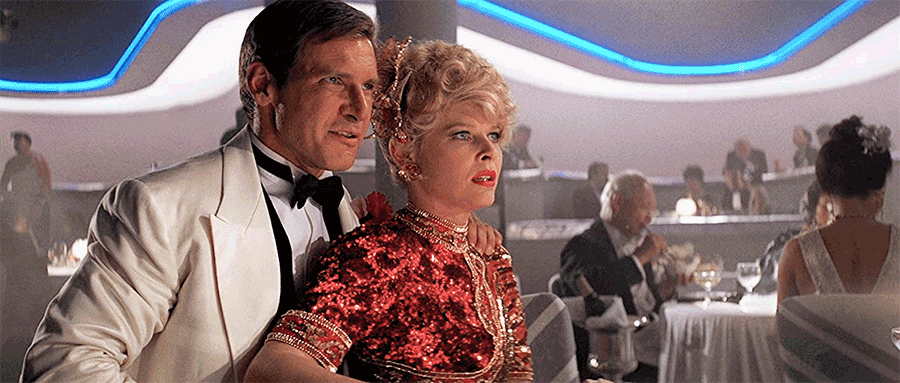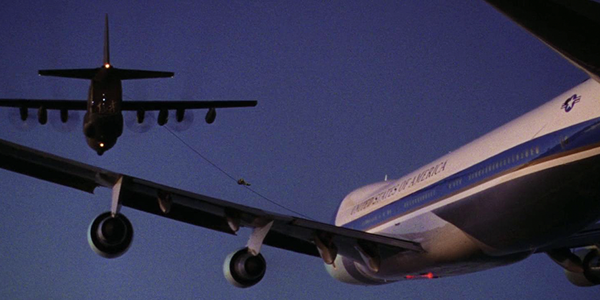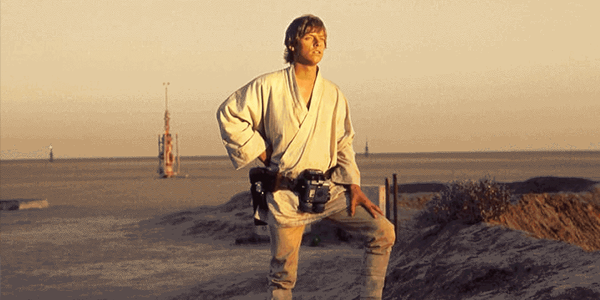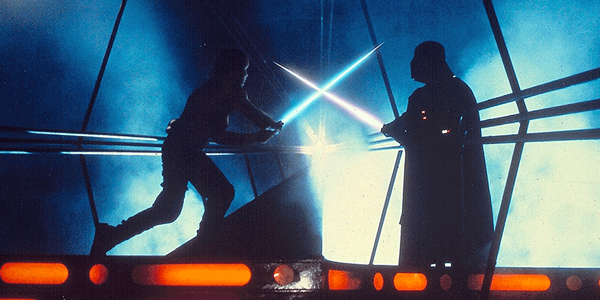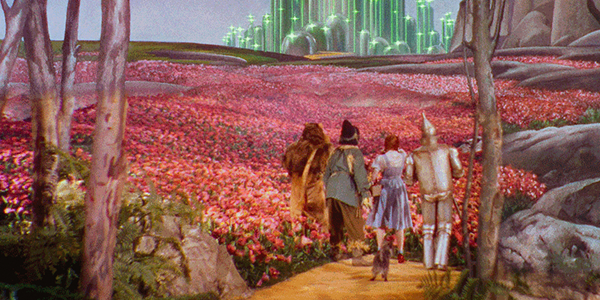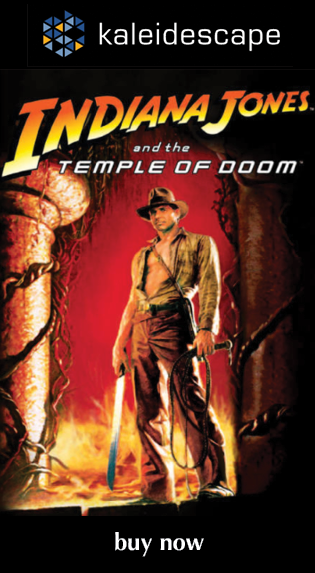ALSO ON CINELUXE
Sign up for our monthly newsletter
to stay up to date on Cineluxe
Yes, it’s a credulity-straining mess of a movie, but it’s a mess that works—and Doom looks and sounds exceptional in 4K HDR
by Dennis Burger
updated May 3, 2023
If you’re looking for a study in ambivalence, you’ve come to the right place. My thoughts on Indiana Jones and the Temple of Doom are many, and they’re almost all contradictory. This first followup to what I consider to be one of the best action-adventures ever made is a mess. It’s erratic, tonally inconsistent, and utterly relentless. Its over reliance on gags (in more than one sense of the word) does it no favors, and it strains the bounds of credulity at every turn, never quite dipping into nuke-the-fridge territory, but coming awfully close.
And yet I absolutely adore this mess of a movie, perhaps even more than the superior Last Crusade, which was a massive course correction before the series went completely off the rails with its fourth entry, whose name I will not utter here. Temple of Doom may be flawed, but it’s fascinatingly flawed; it’s entertainingly flawed. And for all the nits I could pick, it’s never boring. And perhaps most importantly, it has a certain rugged charm, despite all the ick.
But hey, you’ve had 37 years now to figure out what you think of this movie and I’m unlikely to change those impressions. What you’re here for is a quick and simple answer to the question of whether the 4K HDR upgrade is worth it.
In a word: Yes! Indiana Jones and the Temple of Doom is exactly how a restoration of a movie like this should be handled. By that I mean that it undeniably still looks like film of its era. Despite some digital tinkering to improve the compositing and clean up a few practical artifacts, it hasn’t been tinkered with to the point that it looks like a modern movie, but it’s clean, well-preserved, and stunningly detailed.
The biggest improvements over the fundamentally flawed Blu-ray remasters from 2012 come in the form of much-improved contrasts and new color timing that doesn’t look like the negative was passed through a cheap Instagram filter. Saturation overall is way, way down from the Blu-ray, but the palette is punctuated by vibrant hues here and there that are way beyond the capabilities of 8-bit video. In that sense, it reminds me of the new remaster of The Wizard of Oz. There’s simply more nuance to the color overall. Every hue isn’t cranked to 11 the way it was in the previous Blu-ray release. The overall cast of the imagery is definitely warm but not cartoonishly so.
Equally important to the effectiveness of this new remaster is the expanded dynamic range, especially at the lower end of the value scale. That’s especially beneficial during darker passages, like the camping scene toward the end of the first act. Previous home video releases of Temple of Doom have either rendered the scene so darkly that you couldn’t appreciate the visual gags or so brightly that it simply wasn’t believable as nighttime. In the new 4K remaster, the scene is appropriately dark, the shadows sufficiently inky, but there’s still enough dynamic range in the image that you can actually see all the critters that torment Willie.
What’s true in that scene is true throughout the picture: The expanded dynamic range gives the image a richness and pop that makes it much more resolved, dimensional, organic, and analog in its presentation.
The audio receives similar treatment in the form of a new Atmos remix overseen by Ben Burtt. Again, the audio is undoubtedly of the era, especially in the way it leans heavily on the midrange, and some of the sound effects sound a bit thin. But I’ll take that any day over newly recorded digital effects foisted upon a soundtrack of this vintage, which almost never sound right.
Height effects are employed subtly but effectively, mostly to give John Williams’ score more room to stretch its legs. Some sound effects also get a bit of a lift but there’s nothing about the remix that’s going to pull your attention away from the screen. In fact, there were a few times when I wondered if anything was coming out of the height channels at all, only to turn off Atmos processing on my preamp and find myself surprised by the collapse of the soundfield. That is the highest compliment I could pay to any Atmos remix of an older film. I didn’t find it intrusive when it was there but I missed it when it was gone.
My only real beef with the 4K version of the Indiana Jones collection is that no new bonus features were created to mark the occasion. Well, that’s not wholly true: Paramount did sanction one new featurette about the sound design of the original film only to unceremoniously dump it on YouTube. Otherwise, the new collection carries over the bonus goodies from the last big release in 2012, of which there are plenty.
I took a sneak peek at Temple of Doom on my Apple TV 4K, and was pleasantly surprised that it looks amazing for the most part. The atmospheric smoke in the dance sequence in Club Obi Wan at the beginning looked a little noisy but not egregiously so. Switching over to my Roku Ultra, said smoke was a bit less noisy and the overall image was crisper and better resolved.
I’m sort of shocked that a bit of digital-looking noise in one shot is the only evidence of compression I could see, and inconclusive evidence at that. There are numerous scenes that function as torture tests of high-efficiency video encoding, like the quick shot of the glistening wet statue encountered by our heroes in the approach to Pankot Palace, or the jewels on the costume of the young Maharaja. Both boast a lot of specular brightness but also a lack of uniformity. In other words, there’s nothing about the patterns in the imagery that’s predictable, especially in motion, and codecs like HEVC thrive on predictability, especially at lower bitrates.
Long story short, if there are any significant shortcomings in Apple’s encoding of the film, aside from perhaps that bit of noisy smoke in the intro, I can’t see them. The bottom line is that the iTunes version in Dolby Vision makes the previous Blu-ray release look like hot garbage in every respect.
Dennis Burger is an avid Star Wars scholar, Tolkien fanatic, and Corvette enthusiast who somehow also manages to find time for technological passions including high-end audio, home automation, and video gaming. He lives in the armpit of Alabama with his wife Bethany and their four-legged child Bruno, a 75-pound American Staffordshire Terrier who thinks he’s a Pomeranian.
PICTURE | Despite some digital tinkering to improve the compositing and clean up a few practical artifacts, it hasn’t been tinkered with to the point that it looks like a modern movie, but it’s clean, well-preserved, and stunningly detailed
SOUND | The audio is undoubtedly of the era, especially in the way it leans heavily on the midrange, and some of the sound effects sound a bit thin, but the Atmos mix, while mostly subtle, is extremely effective
© 2023 Cineluxe LLC


